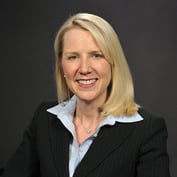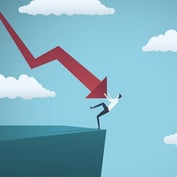John Buckingham didn’t start out with the goal of becoming a money manager. He was just a college kid who took a part-time job with a financial newsletter and followed along. The publisher of that newsletter, The Prudent Speculator, was Al Frank, who had a firm managing about $80 million when undergrad Buckingham joined him in 1987. Eleven years later, the two men launched the Al Frank Fund (VALUX) to put Frank’s strategy into practice. Since inception, the fund has delivered a total return of more than 16%, according to S&P, which gives it a three-star rating and ranks it number one for both the one-year and five-year periods in the mid-cap value category. Morningstar gives the fund a four-star rating while Lipper gives it high marks for total return and tax efficiency. The experts may have different opinions as to what style box the Frank Fund fits into, but Buckingham is forthright: he says it’s “a value fund with growth fund characteristics.”
What was the genesis of the Al Frank Fund? We launched the Al Frank Fund in 1998. I had read a story in Barron’s about a firm that helped small funds get off the ground. It would combine all the funds under one umbrella and share the expenses–legal, compliance, and so forth. To break even, they needed about $5 to $6 million in assets. We thought that with our reputation we should be able to raise [that amount], but we got only about $4 million. That meant we were writing checks to the fund every month for the first six or seven months to keep the expense ratio capped at 2.25%. That was high, but the actual expenses were around 3%. So not only did we not earn a management fee, we actually wrote checks to the fund to pay expenses. In later years you can recapture that spending, which we did, but at the beginning we had to subsidize the fund. When we launched it, the fund was not intended to be a gigantic moneymaker. The idea was to break even for a little while, let it incubate, and hope it would have the same kind of performance as our newsletter, which it has. We were at $9 million in 1999 and now we’re at $250 million and it is a profitable enterprise.
How did it grow so fast? Performance and word of mouth. In 1999, we were the top-performing fund in our category which, according to Morningstar, is small-cap value. According to Lipper [and S&P], we’re mid-cap value. To some people we might be a blend. So we’re very diverse and eclectic.
How do you define the fund’s style? My vision, and Al Frank’s, has always been to make money for our customers and–since we both invest in the same strategy–to make money for ourselves. We’ll buy undervalued and out-of-favor stocks and stick with them for the long term to enrich our customers–the stockholders in our company–and ourselves. And it’s in that order.
As the top-performing fund in the category in 1999–we were up 60% that year, while the category was up 5%–we received some press. Then in 2000 we made 7%, and that put us in the 85th percentile, less than mediocre returns. So Morningstar would say, “You’re risky. You’re volatile,” but our mission is to make money over the long term, even if in the short run we zig-zag. In 2001 the fund was up 30% and that kind of blew everything out of the water because we weren’t supposed to be up 30% as a value fund or any type of fund. That put us back in the top 10th percentile.
At the end of 2001 we were at $40 million in assets. At the beginning of ’02 the world beat a path to our door, looking at the straight three-year performance because most of the big growth funds had gotten whacked in 2000 and 2001. We went from $40 million to $80 million in 2002′s first quarter, and then Al Frank passed away.
Some people said that our fund’s lousy performance that year was because of Al Frank’s death, even though Al didn’t pick any of the stocks, but a lot of the money stuck. We ended ’02 with $48 million in assets, more than we began the year with, even though we were down 26% that year. Then ’03 came along and we were up 78% and ended the year at $178 million. People got excited about it and we had some great publicity. I think we had $100 million in assets come in between December and February. [Since this year] we’re not up 78%, we’re down a couple of percent and some of the assets have started to leave, so we’re at $250 million, roughly.
It seems like the different analysts aren’t all seeing the same fund. In 2002 Morningstar changed its methodology to make a fund’s star rating relative to its peers, not relative to making any money. So you had large-cap growth funds that may have had three-year annualized returns of 3% rated as five-star funds because all the other funds sucked. Morningstar has us in the small-cap value category, and since 2000 that category has performed very well; most of the funds have excellent returns. Relative to our peers, we’re more volatile, and our 16%, 17% three-year annualized rate of return is 21st out of 200-something funds.
There’s always this mentality among academics, and even institutions, that volatility equals risk. My contention is that I’m not buying my stocks for a one-month return or a three-month return: I’m buying for a three-year to five-year return. That’s what we try to convey to all our shareholders. You’ve got to judge us over that long term. If you buy our mutual fund and you stay with it for three or five years, you have excellent returns and you’re very happy. But if you bought it at the peak in April 2002 and sold it in October 2002, you might have lost 35% or 40% from peak to trough. So when they talk about volatility, in my opinion, that’s one of the reasons we don’t rank so high with Morningstar. And it’s not just volatility overall, it’s volatility relative to what your category has been doing.
I notice the fund has a redemption fee. It’s 60 days; I’d like to make it longer. We started it in 2002, long before Eliot Spitzer came along. We were a hot fund and we had this guy put $4 million in our fund on Tuesday, on Wednesday he put in another $4 million from the same hedge fund, and then on Monday, four trading days later, redeemed the whole $8 million. We were a $40 million fund! We didn’t spend his money because we tried to get in touch with him. Generally, if they don’t want to speak to you after investing $8 million, you know that they’re not long-term investors. Immediately after that, we knew we needed a redemption fee because we can’t have day traders or a short-term-oriented people in our fund, especially with our focus on small- to mid-cap stocks. Can you imagine if we had gone out and spent the $8 million on stocks, which in small caps aren’t as liquid, and then had to sell them three days later? So we imposed that 60-day redemption fee.
What’s your benchmark? When we show our performance we use the S&P 500 and the Russell 2000 as comparisons.
My benchmark is to make 15% a year. The objective that we have in our newsletter is that we buy a stock because we think it will double in three to five years. If it takes five years to double, that’s a 15% return. So that’s my minimum goal and that’s why I’m buying my stocks. But there is no benchmark that averages 15%. Stocks have historically returned 10% to 12% a year. So the worst I would ever want to do is to be average, 10% to 12% a year. If you look at the fund’s average annualized return since inception, it’s about 15% a year. If you look at the indexes during that time, their return is about 3% or 4%. You could say my objective is to outperform all of the popular benchmarks, but my real objective is to make money. I don’t want to be down 20%, but [because] the benchmark is down 30%, I’m considered to be doing well.
Some of your major holdings are companies like Apple Computer and Toys ‘R’ Us. How do they qualify as small-cap companies? It goes back to my thumbing my nose at Wall Street. I bought Apple at $14 and now it’s at $26. Who cares if it’s a small-cap company? I didn’t ask to be put in a small-cap box. I just go where the bargains are.








 July 01, 2004 at 04:00 AM
July 01, 2004 at 04:00 AM










